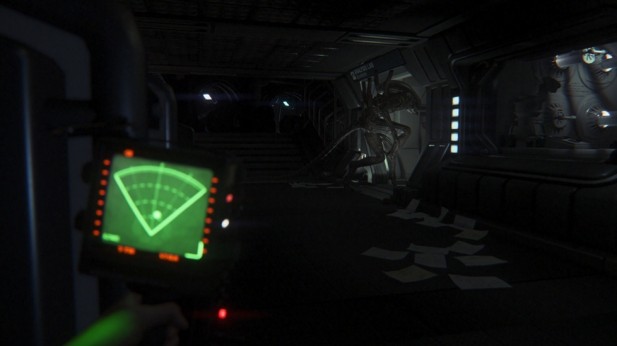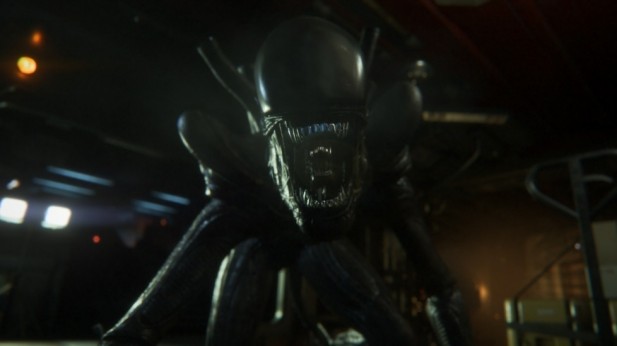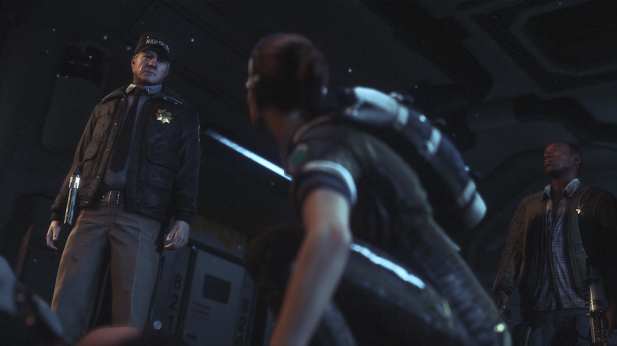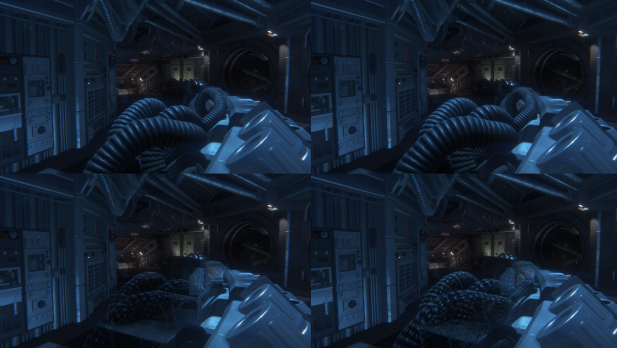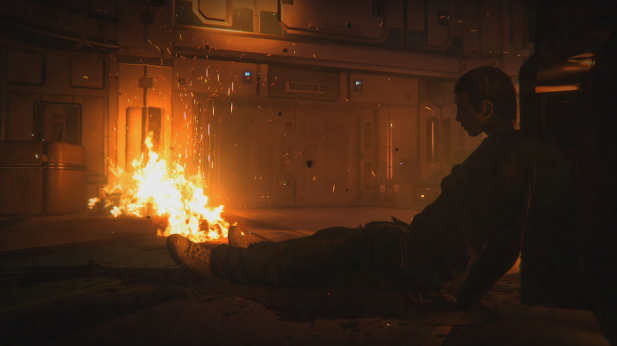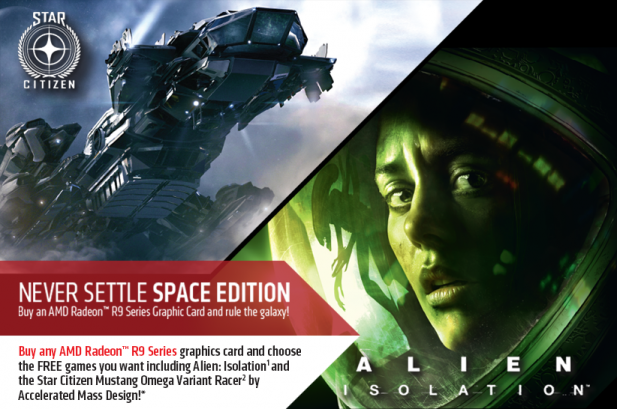Alien: Isolation is a well-made game. Its good-looking, the sounds design is amazing, and the story is decent. It’s a game designed to make you experience fear. But it evokes a very simple and impactful kind of fear. Largely the driving force behind this fear is the notion that the ten foot tall, four hundred pound monster that’s killing everyone around you is coming for you next. You can’t stop it, you can’t kill it, and the only thing you can do is hide and scurry away from him when he goes to hunt for you in a different room.
To be clear there is only one Alien in this game; just one. But that’s all it takes because just the presence of one Alien has turned a functioning space port with numerous crew members into a crumbling, unstable, post-apocalyptic world where an unstoppable monster is hunting you.
Alien: Isolation is at its core about survival. There’s no tangible way to help the feckless people you find throughout the game and there’s no way to stop the Alien from killing everyone. The only thing you can control is whether or not you live. Sometimes that means hiding in a locker and waiting for the Alien to pass, other times it means throwing a flare into another room across the hall to distract it, and still in other instances it means ensuring your own survival by condemning others to death at the claws and jaws of the Alien.
It’s truly an enthralling game but it’s also an inherently risky game because of how much thought and emotion it demands from the player. There were multiple times while I was playing through this game that I just had get up and walk away. The stress, the fear, the creepy noises, and the constant foreboding cumulatively wore out my desire to continue engaging in a fantasy world devoted to killing me in surprising and gruesome ways.
That said there’s something about this game that draws you back to it. Like a Siren’s call I would feel compelled to pick the game back up and continue playing. Whatever the reason I engaged in a cycle of periodically running to and then running from this game as I slowly worked my way through it. This was probably the best way to play it, in small doses rather than one large bust, because of its nature as a fear-based challenge rather than a therapeutic shooter.
Looking at the game from a more technical perspective Alien: Isolation is an attractive looking game that’s an integral part of AMD’s latest iteration of the Gaming Evolved program. For the sake of transparency we received our copy of this game directly from AMD just before it launched last week.
AMD and The Creative Assembly worked together to on the game to ensure that it performed particularly well on AMD’s Graphics Core Next GPUs. One of the more interesting things that AMD helped The Creative Assembly implement is what they call silhouette-enhancing tessellation. This technique aims to improve the visual fidelity of a scene by selectively applying a varying level of tessellation to the edges of the objects currently visible to the player. It’s similar in concept to edge-detecting antialiasing algorithms where the goal is to perform a performance intensive task to only the areas of the frame where it will be appreciated rather than applying it indiscriminately.
While the battle over tessellation performance isn’t nearly as strong as it was three years ago it seems that AMD is continuing its efforts to promote continually more judicious use of tessellation. An unsurprising move given that titles like Crysis 2 with its ham-handed use of tessellation on flat and invisible surfaces pointed out some otherwise less apparent competitive disadvantages in AMD’s initial DX 11 hardware.
AMD is also showing off the use of DirectCompute effects in Alien: Isolation by highlighting The Creative Assembly’s use of real-time radiosity, contact hardening shadows, high definition ambient occlusion+, and accelerated particle effects. According to AMD all of these advanced effects running really well on their hardware thanks to the heavy compute focus of the Graphics Core Next architecture.
Unfortunately, or fortunately depending on who you ask there are no AMD-specific feature present in Alien: Isolation like TrueAudio or Mantle. The absence of TrueAudio in particular seems like a bit of shame given how marvelous the game’s sound design is. We asked AMD about TrueAudio and Mantle support in Alien: Isolation and learned that there are no plans for the game to adopt either of those technologies.
This seems like a bit of missed opportunity for AMD given how significant of an investment they’ve made in promoting and support the PC version of the game. None the less Alien: Isolation is a beautifully lit and game with stunningly good sound design and both AMD and The Creative Assembly have a lot to be proud of. On a less technical note it’s honestly the scariest and most visceral game I’ve played in recent memory.
It’s also currently bundled with AMD’s graphics cards through the Never Settle: Space Edition so if you’re planning on picking up another R9 290 now that the price drop to $299 is in full effect and wondering which games to pick out with your gold reward coupon then Alien: Isolation should be on the top of your list.S|A
Thomas Ryan
Latest posts by Thomas Ryan (see all)
- Intel’s Core i7-8700K: A Review - Oct 5, 2017
- Raijintek’s Thetis Window: A Case Review - Sep 28, 2017
- Intel’s Core i9-7980XE: A Review - Sep 25, 2017
- AMD’s Ryzen Pro and Ryzen Threadripper 1900X Come to Market - Aug 31, 2017
- Intel’s Core i9-7900X: A Review - Aug 24, 2017
